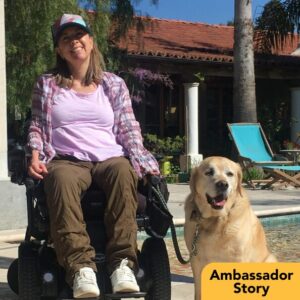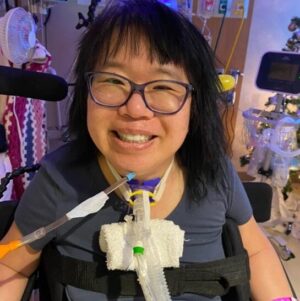
For our clients L’Tonya Bowe and Rick Snyder, mobility represents so much more than just movement. Hear about their experiences with mobility, community support, caregiving, and more in their own words.
L'Tonya Bowe
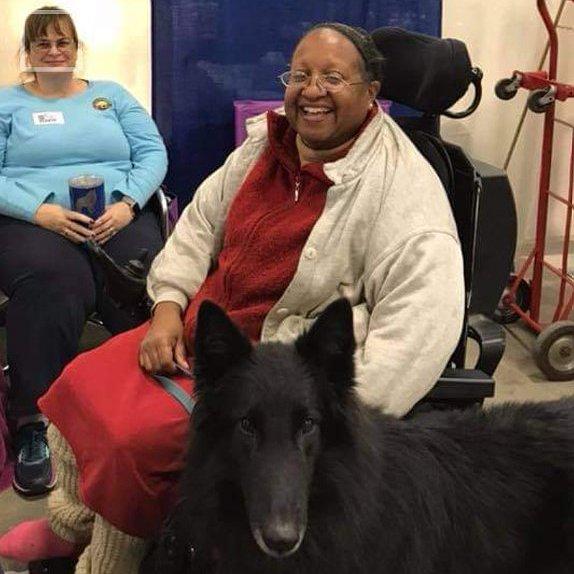
I was diagnosed with Moersch-Woltman Syndrome (also called Stiff Person Syndrome) in 2005. I was able-bodied until 1999 when my first symptoms appeared. I am told that my condition is progressive, but I am believing by God that my symptoms will not get worse.
On a daily basis, I have a critical need for mobility, including a van to get me back and forth to doctor visits, physical therapy, occupational therapy, church services, volunteering at my local food pantry, and going into the community to socialize potential service dogs.

At the moment, I have to use a manual chair to get around because I do not have a van with a lift for my power chair. That fact has caused me to stay home more due to the added strain that using a manual chair puts on my muscles and heart.
The truth is that mobility can affect a lot more than motion.
I have had friends stop calling me or coming to my home because they were tired of assisting me, transporting me, or feeling like I needed something from them if I called them. Having my own van and home health care allows me to be independent and not be a burden on my friends and family members, especially as they get older, and it becomes physically difficult for them to assist me.
There are so many hurdles. Certain add-on features for my power chair were denied by insurance because the standard in power chairs is “for home use only”—in other words, standard power chairs that insurance will cover are not designed for users to leave the house.
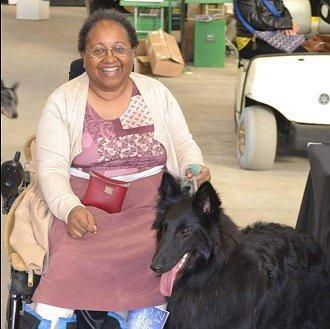
I started fundraising in January after attending a conference where I heard Outreach Manager Sonny Mullen speak about Help Hope Live. It seemed like a legitimate organization, and the way that the funds are raised and managed makes them tax deductible and they won’t affect my income.
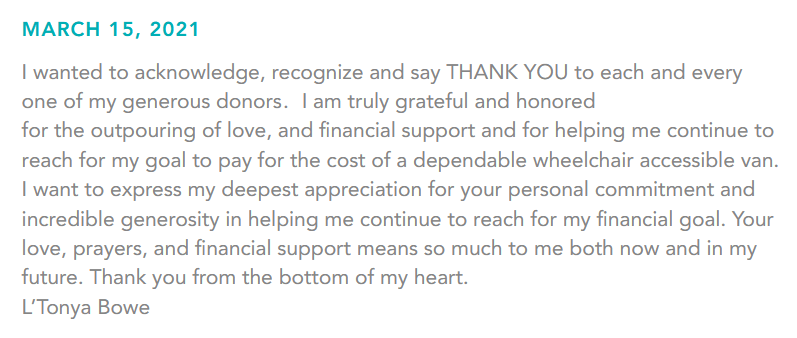
My church family, dog show friends, and family members have been very supportive throughout my journey and committed to help.
It’s difficult for people like me to ask for help, and we don’t take for granted the help that we receive.
We would not be asking if we did not really need it.
Rick Snyder
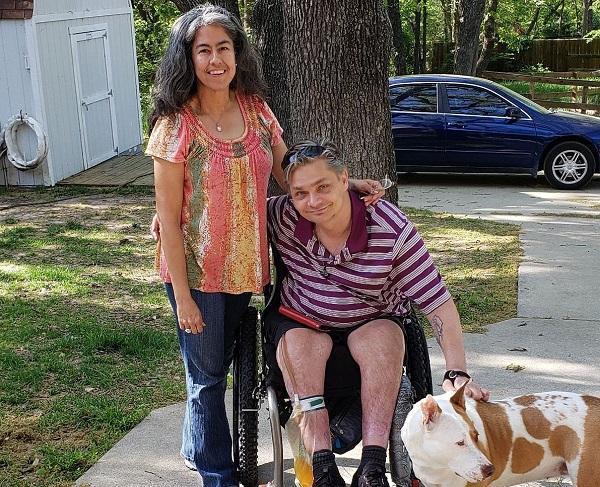
I’ve been a C6-C7 quadriplegic with autonomic dysreflexia since a car accident in 2000.
Mobility concerns entered my life immediately after the accident.
Just a few of the mobility-related costs in my day-to-day include:
- An accessible van
- An adjustable bed that suits both me and my partner and caregiver (I call her my queen!)
- Physical therapy to keep me mobile, which Medicaid does not pay for
- Living space modifications, such as widening doors, to accommodate a wheelchair
- Bathroom modifications (right now, my accessible shower chair doesn’t even fit into my small apartment shower)
- Adaptive aids for my computer
- Replacing the carpet so we have flooring that is easier to roll a wheelchair on, and
- Stainless steel protectors and corner guards to protect corners and edges (my wheelchair seems to always tear up my surroundings, which becomes costly to repair as it happens).
These basic spinal cord injury-related costs can make life significantly easier for myself and my caregiver. My mobility needs will increase as I get older: my muscles may shorten, and I will likely deal with spasticity and deteriorating health.
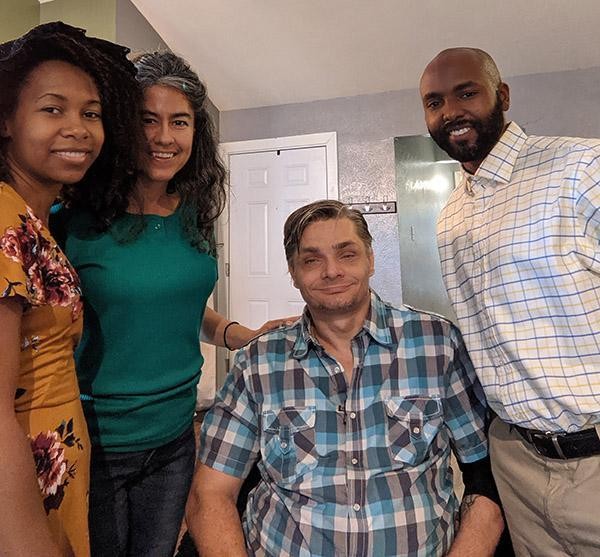
I was in the HVAC business before my accident making $25 per hour for my work. Today, I’m lucky to get $509 per month in Social Security disability pay along with a little help with the rent.
People like me don’t want to be a leech on government funding. Take just one look at some of the prices of the everyday things that we require to live independent lives with a spinal cord injury and you can understand why they remain out of reach to us.
Without help, medical bills alone would destroy my financial foundation and even impact my credit to limit my options for the future.
My dream would be to further my education or pursue training to get a decent job again. That way, I could stop relying on government funding and afford an accessible house that I could move around in. I’d also be able to cover my burial expenses if anything happened to me so I would not be a burden on my loved ones—I sure can’t do it in the situation I’m in now.

Government programs have rules and regulations that sometimes make it difficult to get your needs met.
For example, you might be able to get help with the cost of certain vehicle modifications for accessibility, but they won’t help you get a vehicle. How is a person living with a spinal cord injury supposed to afford a van or vehicle on their own? Most payments for a vehicle are more than anyone who is on SSDI can afford, and if you make “too much,” you could lose your benefits.
That’s one of the reasons why I began fundraising with Help Hope Live. I’ve done so much research over the past 20 years into government programs and grants, but nothing really became successful. I had no idea that I could get help from a nonprofit like Help Hope Live.
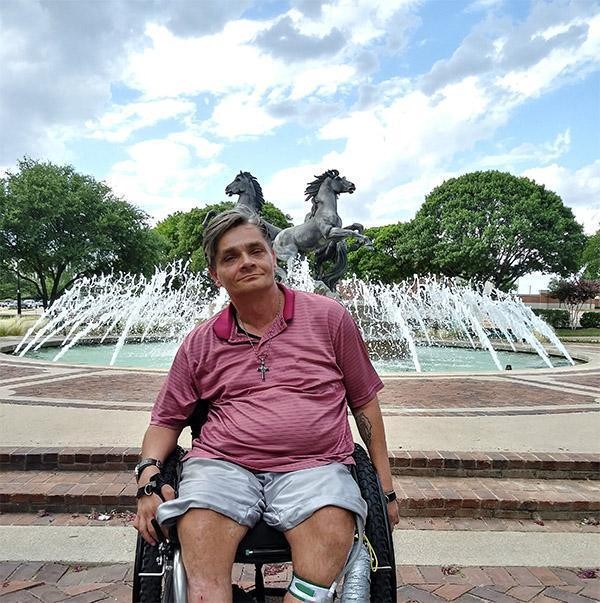
Fundraising with Help Hope Live has been the only real progress I’ve made with getting my needs met.
It’s still a ways off before I can say that my fundraising campaign is completely successful, but I love the progress that we’ve made. The feeling of accomplishment is awesome, especially while working with the great people at Help Hope Live. They keep you going if you show that you’re willing to put forth the effort.
I’ve received donations to my campaign from the Lions Club and even two politicians running for mayor of my town along with many other small donations from friends. I ultimately hope to raise enough to get an accessible van—transferring is becoming more of an issue as I get older, both for my shoulders and my caregiver’s back.
Mobility represents independence and freedom to someone like me with a spinal cord injury.
It means I can go where I want, when I want, and spend a whole lot less time depending on others who may or may not have time to help.
If I could change one thing, it would be awareness of disabilities like mine in our society. This kind of accident can happen to anyone, and there is such a strong need for grants and programs to help people get back to being productive members of society. There are so many costs involved in life with quadriplegia, from mobility needs to the medical costs of emergency room visits, regular doctor appointments, and plenty of specialists.
Written by Emily Progin
